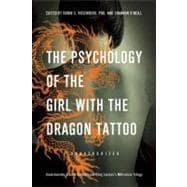
What is included with this book?
| Introduction | p. 1 |
| The Girl with the Armored Façade | p. 7 |
| Lisbeth Salander and the "Truth" About Goths | p. 9 |
| The Body Speaks Louder than Words: What is Lisbeth Salander Saying? | p. 29 |
| Lisbeth Salander as a Gender Outlaw | p. 47 |
| What to Say when the Patient Doesn't Talk: Lisbeth Salander and the Problem of Silence | p. 67 |
| Mistrustful: Salander's Struggle with Intimacy | p. 81 |
| The Girl with the Tornado Inside | p. 101 |
| Sadistic Pigs, Perverts, and Rapists: Sexism in Sweden | p. 103 |
| Broken: How the Combination of Genes and a Rough Childhood Contribute to Violence | p. 117 |
| Men Who Hate Women But Hide It Well: Successful Psychopathy in the Millennium Trilogy | p. 135 |
| If Lisbeth Salander Were Real | p. 153 |
| Confidential: Forensic Psychological Report-Lisbeth Salander | p. 169 |
| The Girl Who Couldn't be Stopped | p. 189 |
| The Magnetic Polarizing Woman | p. 191 |
| Resilience with a Dragon Tattoo | p. 213 |
| Lisbeth Salander, Hacker | p. 233 |
| Salander As Superhero | p. 253 |
| The Cost of Justice | p. 273 |
| About the Editors | p. 291 |
| Table of Contents provided by Ingram. All Rights Reserved. |
The New copy of this book will include any supplemental materials advertised. Please check the title of the book to determine if it should include any access cards, study guides, lab manuals, CDs, etc.
The Used, Rental and eBook copies of this book are not guaranteed to include any supplemental materials. Typically, only the book itself is included. This is true even if the title states it includes any access cards, study guides, lab manuals, CDs, etc.